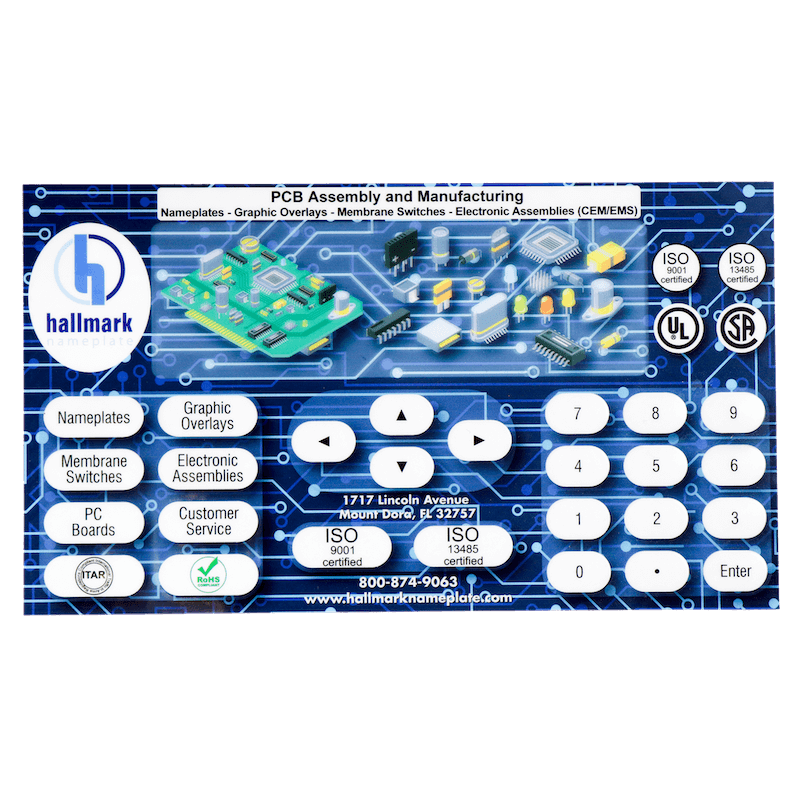Membrane Switches vs. Traditional Switches: What You Need to Know
Recognizing the Value of Membrane Switches in Interface
Membrane buttons are integral elements in the layout of reliable individual interfaces, promoting not only functionality however additionally boosting visual allure and user interaction. As we check out the different benefits and future fads associated with Membrane technology, it ends up being clear that these buttons are extra than simply parts; they stand for a merging of innovation and practicality.
What Are Membrane Buttons?

The spacer layer, which consists of sticky residential properties, permits for the splitting up of the circuit layer from the overlay, making sure that the switch remains in a non-activated state till pushed. When pressure is applied to the overlay, it presses the spacer layer, connecting the gap and finishing the circuit in the underlying layer. This style not only decreases the physical room needed for conventional mechanical switches yet likewise enhances the longevity of the gadget, as Membrane buttons are typically immune to dust, moisture, and various other environmental variables.
Frequently found in applications varying from consumer electronics to clinical devices, Membrane switches are indispensable to contemporary innovation, supplying a efficient and straightforward user interface that lines up with modern design needs.
Advantages of Membrane Buttons
While various button technologies exist, Membrane Switches offer unique advantages that make them especially preferable in various applications. Among the key benefits of Membrane buttons is their compact design, which permits space-saving implementations in gadgets where realty is limited. Their slim account not only improves visual charm however also assists in light-weight construction.
One more substantial advantage is their resistance to environmental aspects. Membrane buttons are generally secured versus moisture, dust, and pollutants, making them excellent for use popular atmospheres, such as clinical tools and commercial tools. This durability prolongs the life expectancy of the button, lowering upkeep prices and enhancing reliability.
Furthermore, Membrane switches can be personalized to fulfill specific design demands, integrating special graphics and colors that improve individual communication. Their tactile comments choices can additionally be customized to give a satisfying user experience. In addition, Membrane buttons are cost-efficient, specifically in high-volume applications, as they can be created effectively.
Applications in Different Industries

In the consumer electronics market, Membrane buttons are common in devices such as microwaves, cleaning devices, and remote controls. Their responsive feedback and visual options boost customer experience while supplying a streamlined, contemporary appearance. In addition, vehicle manufacturers make use of Membrane buttons in control panel controls and infotainment systems, where area is limited, and individual engagement is essential.
Furthermore, the commercial industry leverages Membrane switches in control panels for machinery and tools, permitting instinctive operation in frequently rough environments. Their resistance to chemicals and dampness ensures durability and integrity in these applications. In general, the flexibility of Membrane Switches adds considerably to their prevalent use, making them important in numerous technological domains.
Style Factors To Consider for Membrane Switches

When making Membrane buttons, several essential factors to consider have to be thought about to ensure ideal performance and individual experience. To start with, the selection of products is critical; selecting resilient, high-grade substrates can improve the button's durability and resistance to ecological aspects such as wetness and temperature level changes.
Secondly, the design of the visuals overlay need to focus on clarity and ease of use. Icons and text have to be understandable, and the format must assist in user-friendly interaction (membrane switches). Additionally, responsive comments is necessary; incorporating a tactile dome or other devices can improve the user experience by providing physical verification of activation
One more essential factor is the button's electrical efficiency. Developers should make certain that the conductive traces are appropriately developed to minimize resistance and stay clear of signal interference. This entails examining the required actuation pressure and making sure compatibility with the electronic parts they will user interface with.

Future Patterns in Membrane Innovation
As modern technology continues to breakthrough, Membrane buttons are positioned to develop substantially, driven by innovations in products and making methods. One arising trend is the consolidation of innovative materials, such as flexible substratums and conductive inks, which boost resilience and minimize the overall weight of Membrane switches. These products not just improve the tactile feedback but also enable for the layout of buttons that can endure harsher ecological problems.
In addition, the integration of touch-sensitive innovations is changing typical Membrane Switches into even more interactive user interfaces. Capacitive touch sensors embedded within Membrane switch panels can provide a more instinctive and receptive customer experience, aligning with the more helpful hints growing demand for smooth, contemporary styles in customer electronic devices.
In addition, innovations in printing techniques, such as digital and 3D printing, enable rapid prototyping and customization of Membrane buttons. This versatility enables makers to react quicker to market needs and customer preferences.
Finally, sustainability is becoming a significant focus, with manufacturers exploring eco-friendly products and procedures. As these patterns unravel, the future of Membrane innovation guarantees enhanced functionality, visual allure, and environmental duty, solidifying their role in advanced customer interfaces throughout various industries.
Verdict
In final thought, Membrane Switches stand for a crucial part in the style of customer interfaces, integrating capability with aesthetic adaptability. As developments in modern technology continue, the development of Membrane switches is expected to more refine individual interfaces, driving technology and improving functionality in a progressively complex technological landscape.
Membrane buttons are integral elements in the layout of effective user interfaces, assisting in not just functionality however likewise boosting aesthetic appeal and individual communication.Membrane Switches serve as a crucial part in find here various user interfaces, helping with a smooth communication in between customers and electronic devices.While various switch innovations exist, Membrane Switches deal distinctive advantages that make them particularly desirable in various applications.Furthermore, Membrane buttons can be tailored to meet particular style requirements, including unique graphics and colors that enhance user interaction.In conclusion, Membrane Switches stand for an essential part in the layout of customer interfaces, incorporating capability with visual versatility.